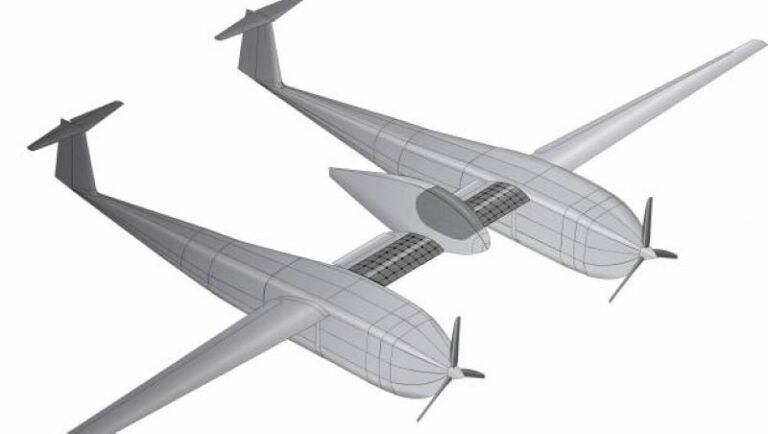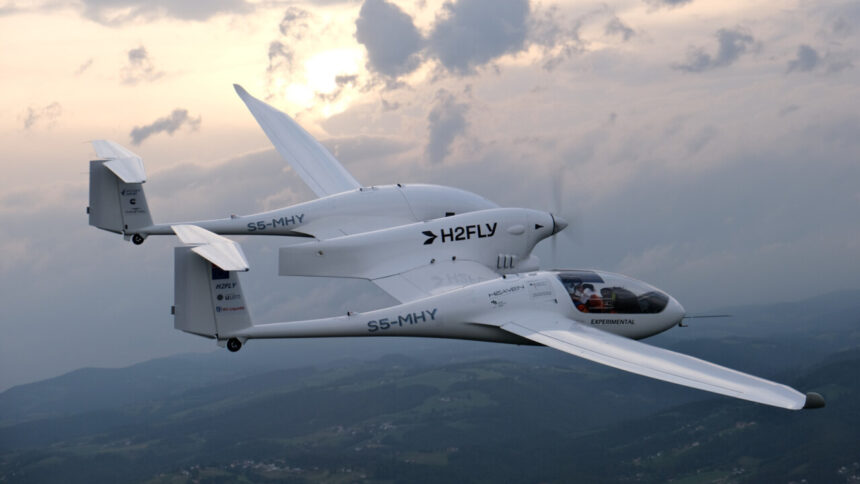Aviation pioneer Bertrand Piccard is leading an ambitious project with Climate Impulse, a hydrogen-powered aircraft set to complete a non-stop global flight. This initiative builds on his Solar Impulse success in 2015, which proved solar-powered aviation was possible but lacked commercial viability. Now, Climate Impulse aims to revolutionize air travel by demonstrating that a plane can circle the world without refueling, relying entirely on liquid hydrogen—a fuel created through renewable-powered electrolysis【858†source】.
The plane’s journey will cover 40,000 kilometers (25,000 miles) along the Equator, using hydrogen fuel cells to generate electricity and power the aircraft. Unlike traditional fuel-based jets, this approach eliminates carbon emissions, setting a potential blueprint for the future of green aviation【858†source】.
What’s Happening & Why This Matters
Climate Impulse’s Mission and Technological Breakthroughs
The Climate Impulse initiative, backed by Airbus and Syensqo (a Solvay offshoot), is pushing the boundaries of aviation. The first test flights are scheduled for 2025, with the full global mission planned for 2028.
- The plane operates using hydrogen fuel cells, converting liquid hydrogen into electricity for propulsion.
- With a 110-foot (34-meter) wingspan, its size is comparable to an Airbus A320.
- It will cruise at 180 km/h (100 knots) at an altitude of 10,000 feet.
The Challenges of Hydrogen-Powered Flight
Hydrogen has long been used in space travel, but its integration into commercial aviation presents serious hurdles. Unlike conventional fuels, liquid hydrogen must be stored at -253°C (-423°F) to remain stable, requiring highly insulated cryogenic tanks.

- Hydrogen leakage poses explosion risks, necessitating ultra-secure fuel containment.
- Climate Impulse’s team is developing next-gen fuel cells, electric motors, and thermal regulation systems to ensure efficiency and safety.
- The project aims to showcase hydrogen’s viability as an alternative to fossil fuel-powered aviation.
Aviation’s Green Revolution and the Role of Hydrogen
Aviation contributes roughly 2% of global CO₂ emissions, making sustainable fuel alternatives essential. Unlike cars or rail transport, battery-powered airplanes remain impractical due to weight constraints. Hydrogen is emerging as the most promising alternative, but commercial adoption requires massive infrastructure investments.
- The world still depends on fossil fuel-derived hydrogen, slowing the shift to green hydrogen production.
- Governments are investing billions in hydrogen research and infrastructure, but commercial viability remains years, if not decades, away.
- Airbus and Boeing are exploring hydrogen-powered aircraft, but large-scale adoption is still in infancy.
Hydrogen Flight’s Future and Market Impact
While Climate Impulse is a demonstration aircraft, its success could accelerate hydrogen adoption in aviation. Airbus and other major manufacturers are already designing hydrogen-compatible planes, while airports are examining refueling logistics.
- Hydrogen’s energy density is higher than batteries, making it a realistic long-term solution.
- Challenges like fuel storage, distribution networks, and aircraft retrofitting must be resolved.
- If Climate Impulse succeeds, it could inspire major airlines to invest in hydrogen fleets, reshaping the aviation industry’s carbon footprint.

TF Summary: What’s Next
Climate Impulse is an experimental aircraft and a bold step toward a zero-emission aviation future. The mission could validate hydrogen’s potential and drive policy changes, industry investments, and regulatory approvals for hydrogen-powered planes if successful. The aviation sector is under increasing pressure to decarbonize, and this initiative could provide a critical blueprint for future development.
— Text-to-Speech (TTS) provided by gspeech


